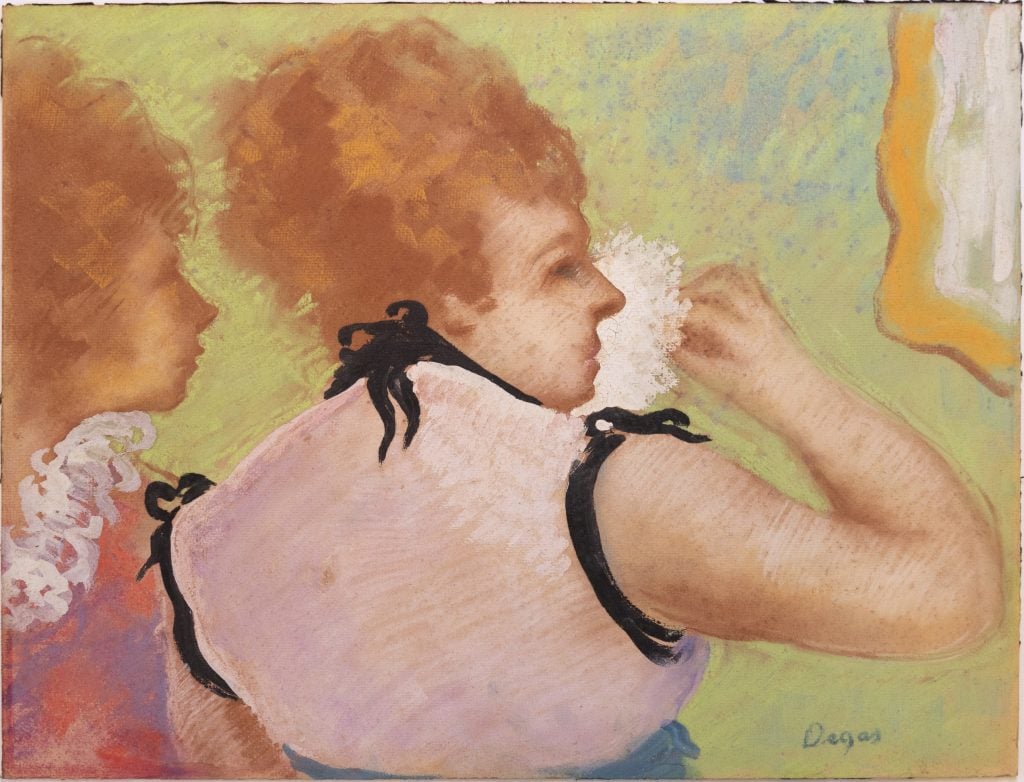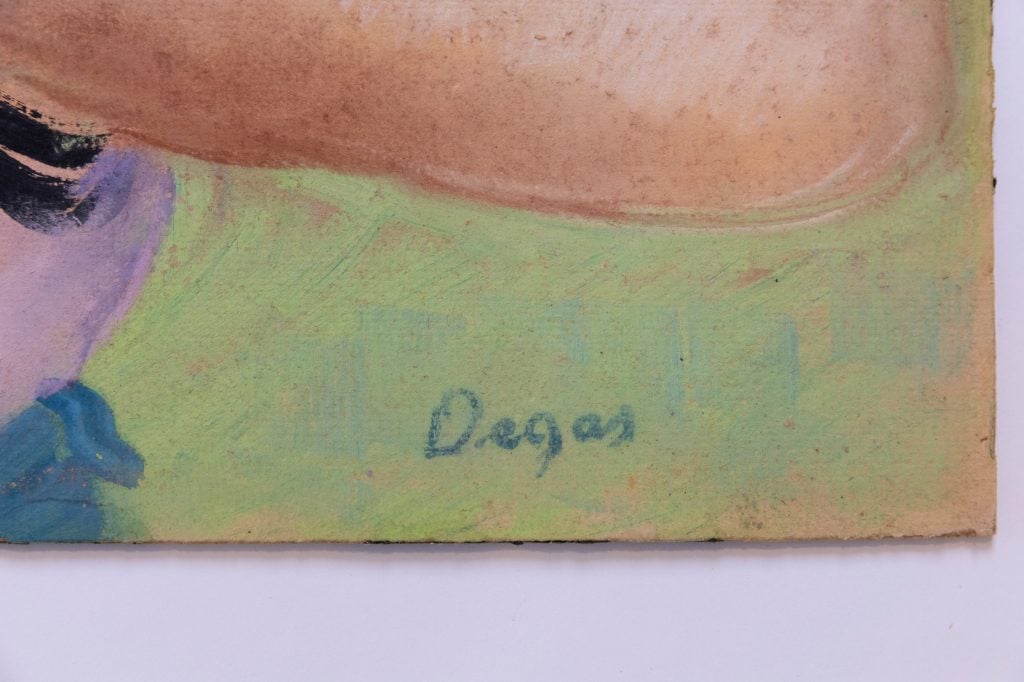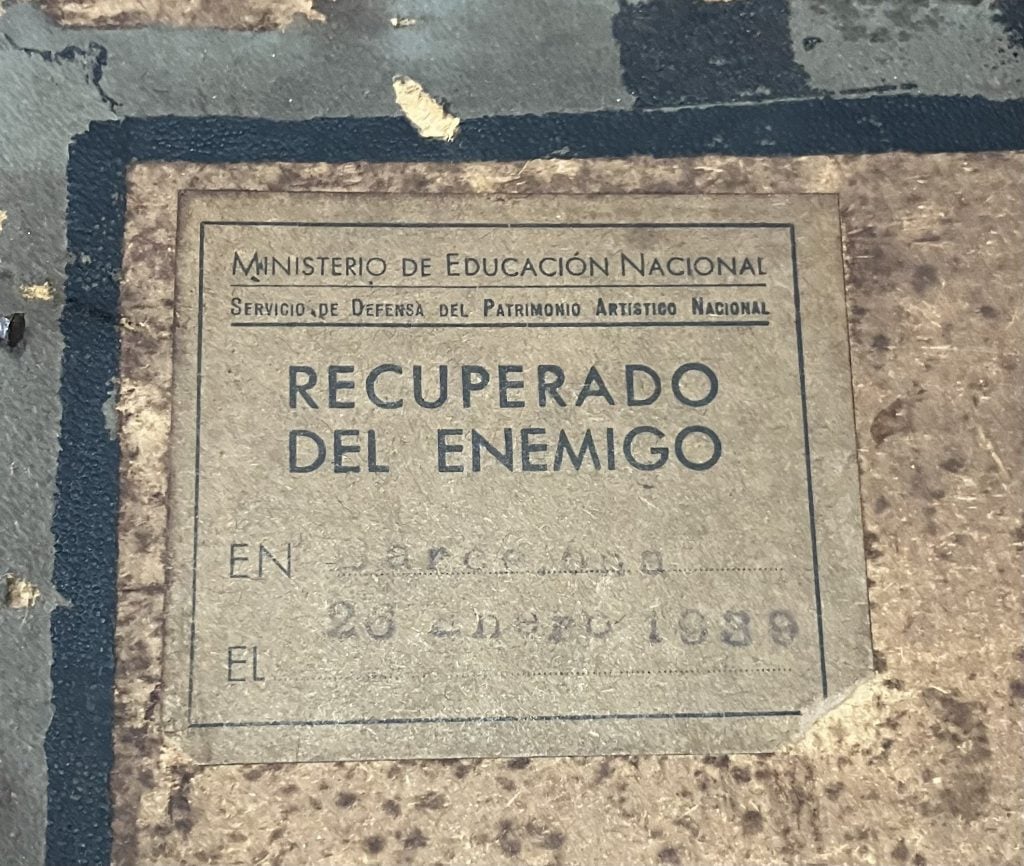Art History
Artwork Bought Online for $1,000 Identified as a Long-Lost Degas Worth $13 million
The pastel drawing was allegedly stored in a monastery during the Spanish Civil War.

The pastel drawing was allegedly stored in a monastery during the Spanish Civil War.

Jo Lawson-Tancred

A savvy online thrifter got the deal of a lifetime when they spotted a pastel drawing listed as a “fake” Degas in 2021. The surprisingly masterful composition caught the punter’s eye and, with the help of expert Michel Schulman, they determined that it was most likely Éloge du maquillage (In praise of cosmetics) (1876), a known brothel scene painted by Degas that had been recorded as missing for several decades.
This dramatic story came to light on May 28, when the painting was presented to the public at the Institute Français in Madrid. It was first reported by the Catelan daily news outlet El Punt Avui.
According to the report, an unnamed buyer from Barcelona entered into a bidding war on the auction website Todocolección. Originally listed for just €1 ($1), he won the work for €926 ($1,000). At the time, this must have seemed like a windfall to the previous owner, from Sabadell in Catalonia, who had inherited the painting. Though it bore the signature “Degàs,” he didn’t believe it could be genuine so listed the work alongside some provenance documents showing that it had been bought in 1940 by his ancestor Joan Llonch Salas, a collector and former president of the local Banco Sabadell.

Degas signature on Éloge du Maquillage (1876). Photo courtesy of Juan Arjona.
Now that it has been attributed to Degas, some experts suggest the Impressionist pastel on cardboard, measuring roughly 19 by 24.5 inches, might be worth around €7 million or €8 million (around $8 million). Other estimates go as high as €12 million ($13 million), according to El Nacional.
So what is the story of this long lost artwork? Schulman, who is the author of Degas’s online catalogue raisonné, went on a mission to find out with the help of art historians Judith Urbano and Álvaro Pascual, and consultant Juan Arjona Rey of Consultores Rey.
The team came to the conclusion that it was a Degas “after an exhaustive analysis of pigments, a meticulous study carried out with X-rays and photographs, among other techniques,” Schulman told the Spanish newspaper El Pais. The analysis, carried out in Madrid in July 2023, dated the work to the late 19th century. He added that it was also important to check that the signature of the work was integrated and had not been added later.
Schulman, who has catalogued 1,750 works by Degas, further suggested that In Praise of Makeup was related to another work by the French painter, Le client sérieux (The Serious Client). “Degas used to work in his paintings from a scene or character from another previous work,” Schulman explained.
The authentication team’s research was aided by several labels still attached to the back of the work, which helped them prove that the work entered Spain while in the possession of the artist Julián Bastinos, who had bought it from Degas in Paris in 1887 for 3,000 francs. This transaction is recorded in a letter that Degas sent to his friend, the opera singer Jean-Baptiste Faure.
Bastinos took it with him to Cairo in the 1910s, a sojourn referenced by a label on the back of the work that shows it was framed in Egypt. After Julián’s death in 1918, the pastel was repatriated to Barcelona by his brother Antonio J. Bastinos.

A label from 1939 on the back of Edgar Degas, Éloge du Maquillage (1876), reads “recovered from the enemy” in Catalan. Photo courtesy of Juan Arjona.
In 1934, the work was reportedly one of 150 works from the Bastinos family collection, including an oil painting by Goya, that were confiscated by the authorities. They were stored by Francoist republicans in the monastery of Pedralbes for safekeeping during the Spanish Civil War.
A label on the back by the Francoist Ministry of National Education records that the pastel was “recovered from the enemy” in January 1939. The researchers say it was returned to the Bastinos family in 1940 and soon after sold to Llonch on September 13, 1940 for 3,000 pesetas.
The work was last seen in public in 1952 when Joan Llonch Salas leant it to a group exhibition at the Barcelona gallery Gaspar, as recorded by another label on the back of the work. A monotype on paper of the same subject, a woman with red hair shown in profile and powdering herself, is held in the collection of the Musée des Beaux-Arts du Canada in Ottawa. In Praise of Makeup is now listed in Schulman’s digital catalogue raisonné.